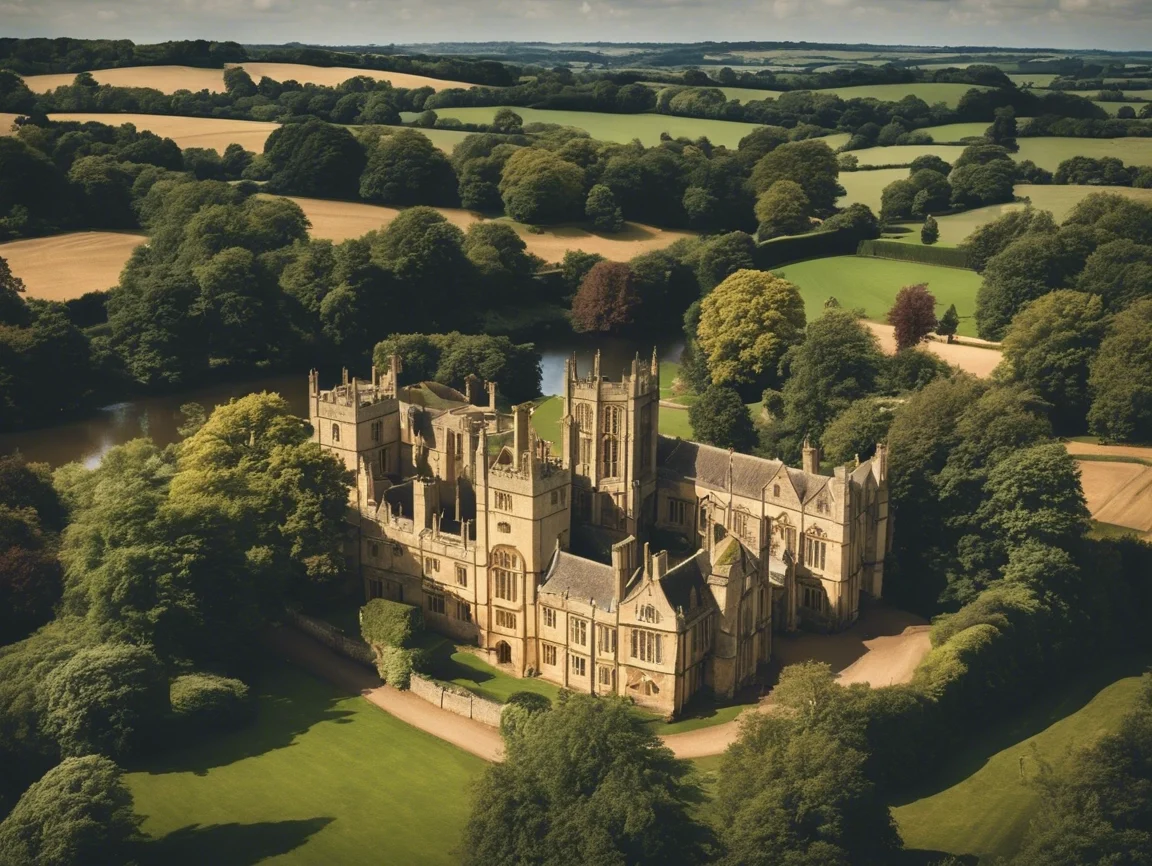Exploring Northumberland: A Hidden Gem of the North East
An Introduction to Northumberland
Northumberland, located in the North East of England, is a region characterized by its breathtaking landscapes, quaint towns, and deep-rooted history. This county, bordered by Scotland to the north, boasts a unique geographical position. Its coast, stretching along the North Sea, showcases pristine beaches and rugged cliffs that are complemented by an interior featuring rolling hills and rich woodlands. Despite its undeniable beauty, Northumberland is frequently overlooked as a prime travel destination, often overshadowed by its more prominent neighbors such as North Yorkshire and Cumbria.
Historically, Northumberland has been shaped by significant events and influences, evident in its array of architectural marvels and ancient ruins. The county is home to some of England’s most iconic castles, including the formidable Alnwick Castle and the imposing Bamburgh Castle, both of which serve as reminders of the region’s storied past. Additionally, Northumberland is famed for Hadrian’s Wall, a UNESCO World Heritage site that stands as a testament to Roman engineering and military strategy. This historical prominence adds to the region’s allure, inviting visitors to explore the stories that have unfolded over centuries.
Beyond its historical landmarks, Northumberland is celebrated for its enchanting small towns and villages, each offering a distinct charm and sense of community. From the artistic heritage presented in the quaint streets of Hexham to the picturesque coastal town of Berwick-upon-Tweed, Northumberland invites exploration and discovery. The warmth and welcoming nature of its residents significantly contribute to the overall experience of visitors, as they often find a sense of belonging within these close-knit communities. Together, these features create a rich tapestry of experiences, making Northumberland a hidden gem that merits attention from both leisure and adventure seekers alike.
Natural Wonders: The Beauty of Northumberland’s Landscapes
Northumberland, known for its captivating beauty, boasts a diverse range of landscapes that are sure to leave visitors in awe. The county is home to Northumberland National Park, a striking expanse of rugged terrain, rolling hills, and pristine moorlands. This area is perfect for outdoor enthusiasts who seek adventure through various activities such as hiking and cycling. With trails that cater to all skill levels, even casual walkers can enjoy the remarkable views and refreshing air that the park offers.
One of the highlights of Northumberland National Park is the Cheviot Hills, where travelers can embark on a journey to the summit for breathtaking panoramic views. The park is also recognized for its dark skies, offering a unique opportunity for stargazers to experience the cosmos in all its glory. Additionally, wildlife enthusiasts will find the park a haven for spotting red squirrels, deer, and countless bird species inhabiting the lush forests and open fields. Late spring and autumn are particularly recommended times to visit, as wildlife activity peaks during these seasons.
Kielder Forest, located to the northwest of the National Park, complements Northumberland’s natural landscape with its expansive woodlands. Offering a mixture of trails for hiking and cycling, Kielder Forest is also home to the famed Kielder Water, the largest man-made lake in northern Europe. The area is popular among families, providing opportunities for picnicking and water sports, creating an ideal setting for a day out in nature.
Furthermore, the coastline along the North Sea presents visitors with dramatic cliffs, sandy beaches, and hidden coves. Coastal walks not only reveal stunning seascapes but also provide a chance to spot seals and puffins along the way. From the majestic Bamburgh Castle overlooking the beach to the serene beauty of Holy Island, Northumberland’s coastline is an essential part of the region’s charm. With the myriad of landscapes available for exploration, Northumberland unquestionably stands out as a hidden gem in the North East, inviting visitors to experience its breathtaking natural wonders firsthand.
Historical Treasures: Castles and Heritage Sites
Northumberland is often celebrated for its striking landscapes and picturesque coastlines, yet it is equally distinguished by its rich historical narrative, particularly through its numerous castles and heritage sites. This region is home to some of the most imposing and historically significant fortifications in England. Alnwick Castle, for instance, is often referred to as the ‘Windsor of the North’ and serves as a quintessential representation of Northumberland’s medieval past. Originally constructed in the 11th century, it has been a residence for the Percy family, deeply embedded in British history. The castle’s impressive architecture, featuring magnificent state rooms and beautiful gardens, offers visitors a glimpse into the opulent lifestyle of the English elite during the medieval and Renaissance eras.
Another notable landmark is Bamburgh Castle, strategically perched on a rocky bluff overlooking the North Sea. This castle has a rich tapestry of history, having served as a royal palace, fortress, and seat of the Kings of Northumbria. The imposing structure, made from sandstone, reflects a blend of robustness and beauty, with its Victorian restorations enhancing its architectural allure. Visitors can explore its interiors, including the extensive collection of artifacts that narrate Northumberland’s storied past.
Furthermore, Hadrian’s Wall, a UNESCO World Heritage Site, stands as a testament to Roman engineering and military might. Stretching across the north of England, this ancient boundary once marked the northern frontier of the Roman Empire. Walking along its remnants provides not only a physical connection to history but also an insight into the lives of those who inhabited this region centuries ago. Guided tours are available for those wishing to immerse themselves fully in the narratives of these majestic sites, while self-exploration offers an intimate understanding of Northumberland’s historical fabric. The combination of these castles and heritage sites distinctly captures the essence of Northumberland’s past, revealing its significant role in shaping English history.
Local Culture and Cuisine: Experiencing Northumberland’s Unique Identity
Northumberland boasts a rich cultural landscape alongside its stunning natural beauty. The vibrant community is reflected in its numerous local festivals, art galleries, and traditional music gatherings, each showcasing distinct elements of Northumbrian identity. One notable event is the Northumbria Music Festival, celebrating folk traditions with performances that captivate both locals and visitors alike. This celebration of music acts as a bridging point, connecting generations through shared cultural experiences.
The local art scene is equally impressive, with galleries such as the Biscuit Factory in Newcastle offering a platform for contemporary artists from the region. Exhibiting a range of mediums, these spaces allow visitors to immerse themselves in Northumberland’s artistic heritage, fostering a deeper understanding of the community’s values and inspirations. Moreover, local artisans can often be found at craft fairs, where they display handmade products that echo the traditional craftsmanship of Northumberland.
In terms of cuisine, Northumberland is a treasure trove of flavors. The region is known for its hearty dishes that reflect its agricultural heritage. Must-try local delicacies include stottie cakes, a type of bread perfect for filling with local meats and cheeses, and the famous pease pudding, often served alongside traditional dishes. For those seeking an authentic dining experience, establishments such as The Rat Inn and The Black Bull offer menus that highlight locally sourced ingredients, embodying Northumbrian hospitality.
Engaging with locals can further enrich the experience of Northumberland’s culture. Visitors are encouraged to participate in community events or take part in guided tours led by residents, providing an opportunity to learn about local customs, history, and cuisine firsthand. By embracing this invitation to connect, one can truly appreciate the unique identity that shapes Northumberland, making it not just a destination, but a community rich in culture and tradition.




